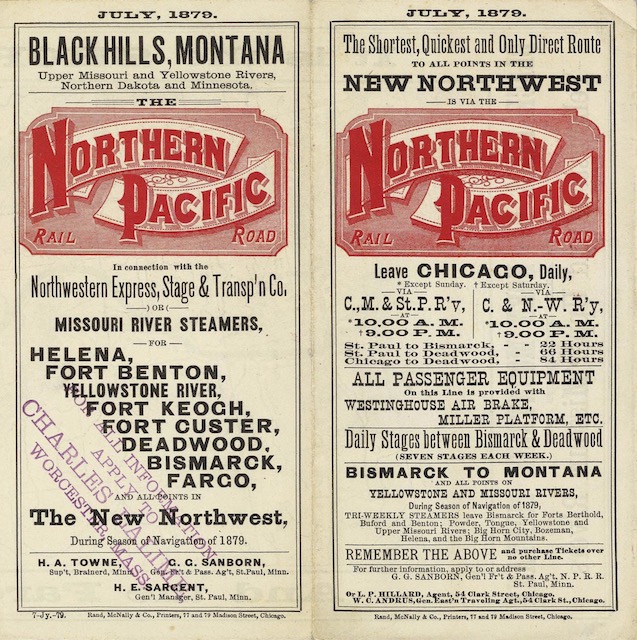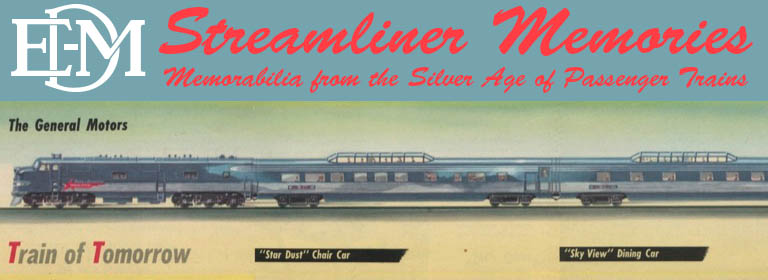Congress gave Union Pacific and Central Pacific loans and land grants to build the first transcontinental railroad. In contrast, Northern Pacific received a much larger land grant but no cash grants or loans. This made construction more difficult, especially since a lot of the land in the land grant wasn’t suitable for farming and thus had little market value in the nineteenth century.
 Click image to download a 3.5-MB PDF of this timetable, which is from the David Rumsey map collection.
Click image to download a 3.5-MB PDF of this timetable, which is from the David Rumsey map collection.
As of 1879, NP had reached Bismarck in the Dakota Territory. At the same time, a gold rush was taking place in the Black Hills. NP was the closest anyone could get to the gold by rail. The map on the back of this brochure shows a line from Bismarck to Deadwood marked “NWES&T Co Line.” This would have been a stagecoach line, as no railroad was ever built in this corridor.
A timetable filling one panel of this brochure shows two trains a day between St. Paul and Fargo with one going on to Bismarck. The train took 25-1/2 hours to go 471 miles for an average speed of 18.5 mph. A train from Duluth joined the Bismarck train at Brainerd, Minnesota; it took 26 hours 10 minutes to get 448 miles from Duluth to Bismarck, an average speed of just 17.1 mph. These slow speeds probably reflect the low quality of construction of the newly built road.
Gold traffic might have been enough to keep the railroad running, but it wasn’t enough to support further construction. Having already gone bankrupt in 1873, the railroad was still in dire financial straights in 1879. In 1881, the railroad’s board capitulated to what would today be called a hostile takeover by a man named Henry Villard. Villard finished the railroad to Portland in 1883, and almost immediately lost control of it due to its shaky finances. It recovered but went bankrupt again in 1893.
